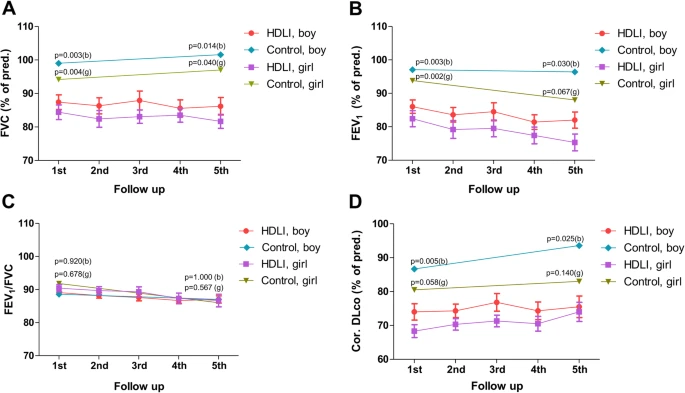- Research article
- Open Access
- Open Peer Review
BMC Pulmonary Medicine 19, Article number: 261 (2019)
Abstract
Background
Use of humidifier disinfectants (HD) at home leads to chemical airborne exposure, causing HD associated lung injury (HDLI) with high mortality. However, the lung function in children diagnosed with HDLI is not well studied. We investigated the effect of HD exposure on lung function, prognosis, and exposure characteristics associated with the lung function phenotype in children.
Methods
Eighty-one children diagnosed with HDLI in a nationwide cohort were tested for spirometry and diffusing capacity of the lung for carbon monoxide (DLco) from July 2013 and followed up with at five time points over 2 years. The results were compared with 122 children without HD exposure as controls. Home investigation and questionnaire analysis were conducted to assess HD inhalation exposure.
Results
HDLI survivor’s mean percent of predicted forced expiratory volume in 1 s (FEV1), forced vital capacity (FVC), and corrected DLco were significantly lower compared with the control group. On longitudinal assessment, FVC was within the normal range, but flattened, and spirometry showed a predominantly restrictive pattern. Corrected DLco did not normalize above 80% despite increasing age. The persistently low phenotype of lung function was associated with initial exposure age, especially less than 12 months of age. Higher density HD exposure during sleep and close distance between the bed and the humidifier were significantly associated with persistently low corrected DLco.
Conclusions
HD exposure affects prolonged decrement in lung function, especially DLco, particularly among children who are exposed within the first year of life. These results suggested that early-life HD exposure determines long-term prognosis of lung function in children.

No comments:
Post a Comment